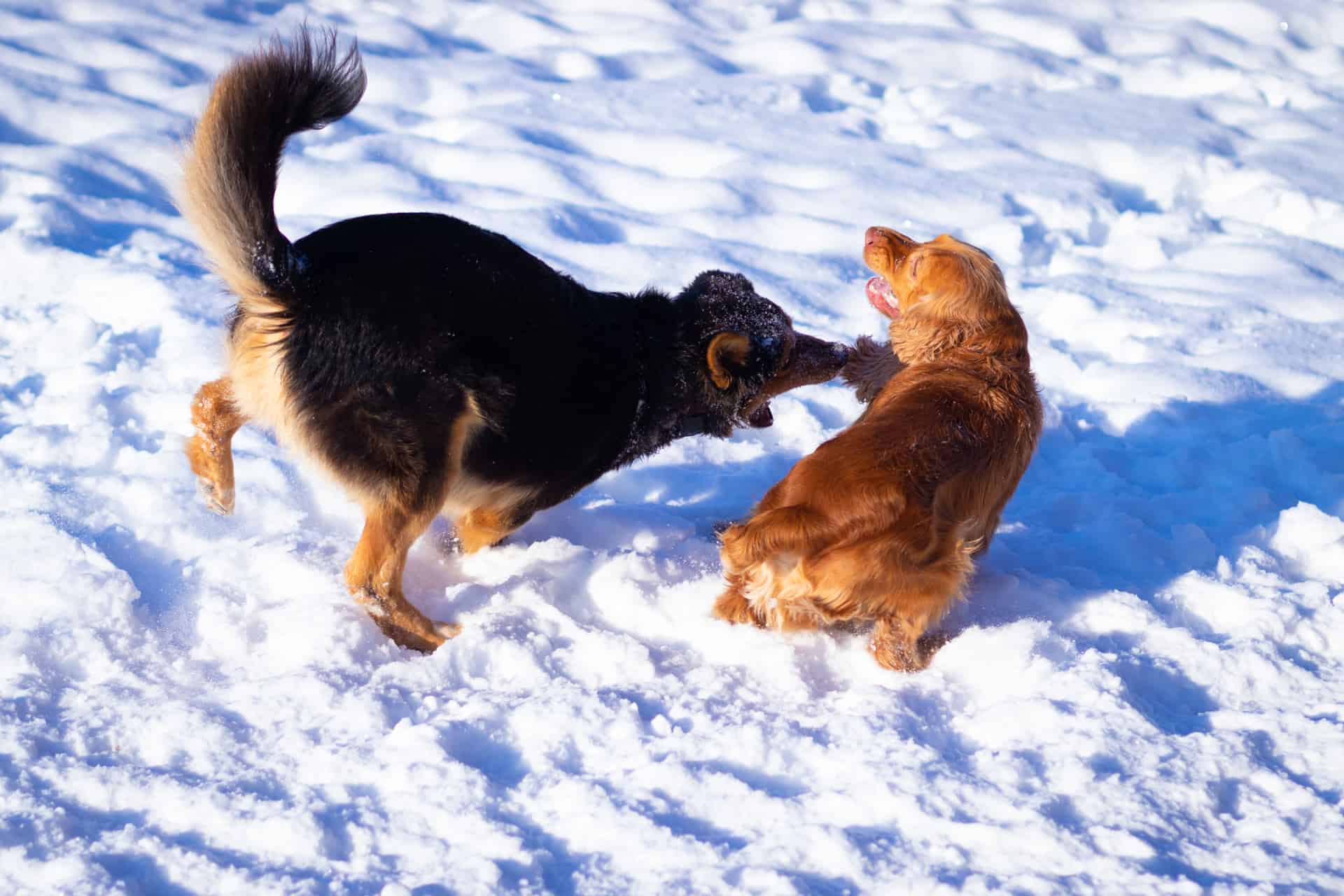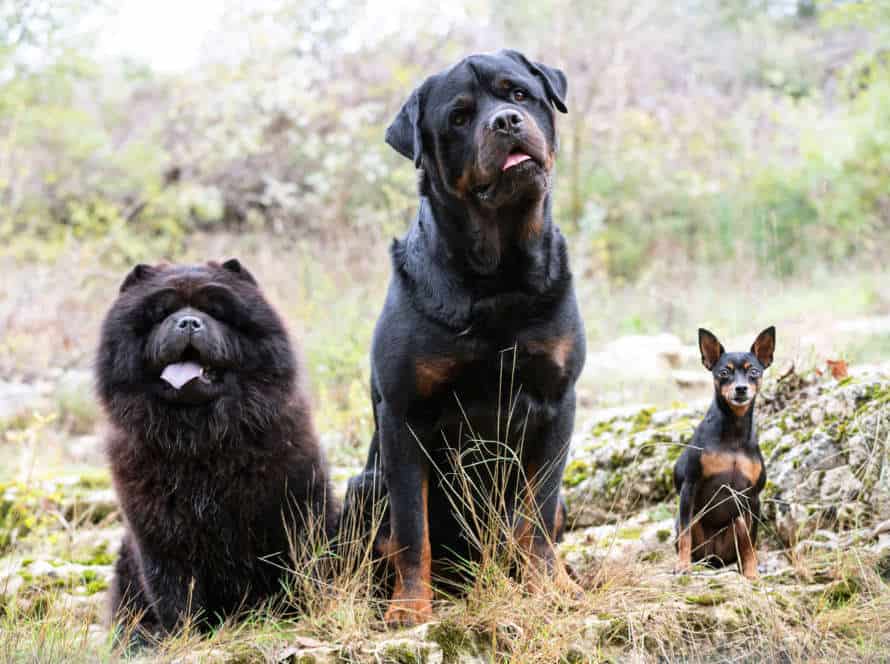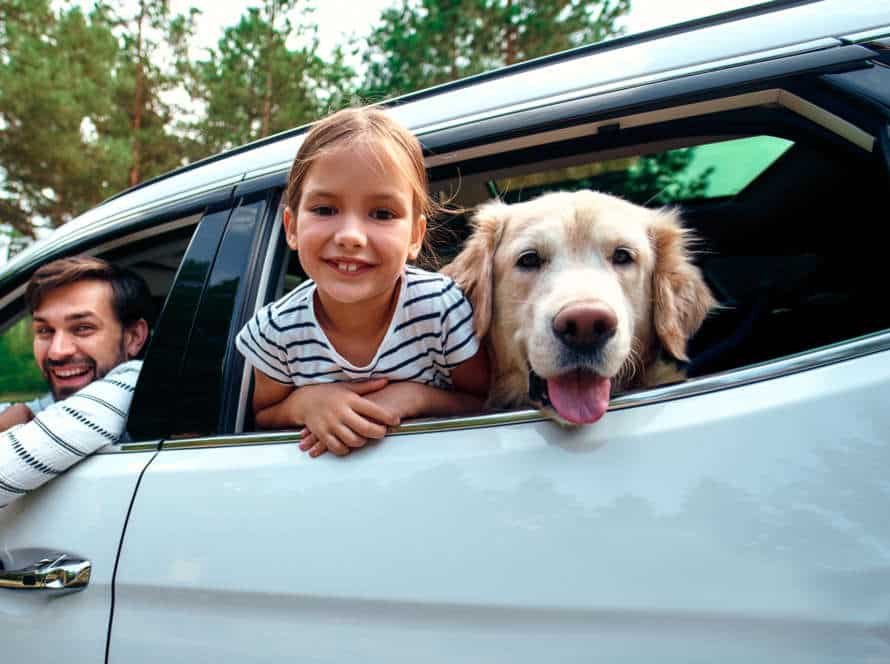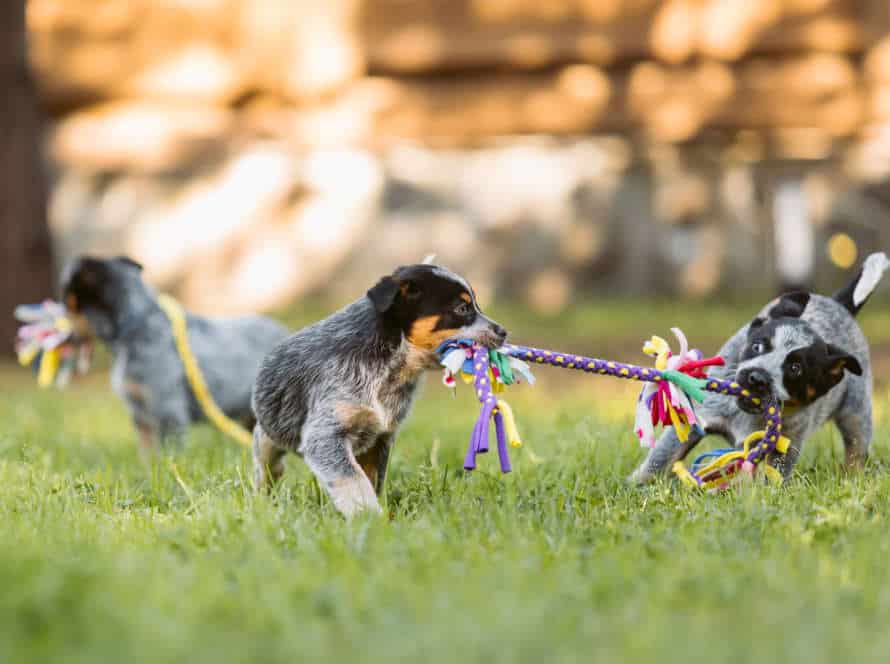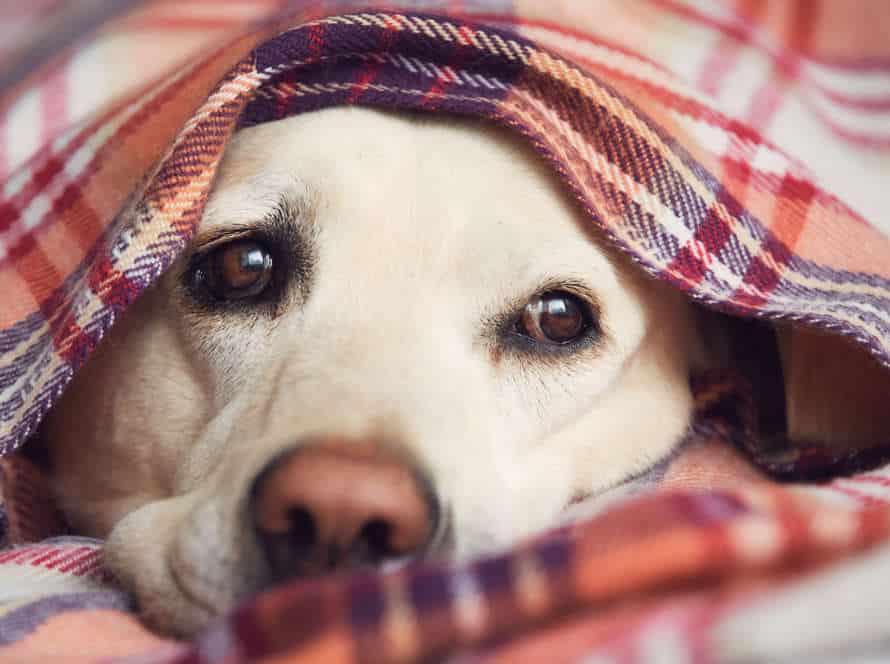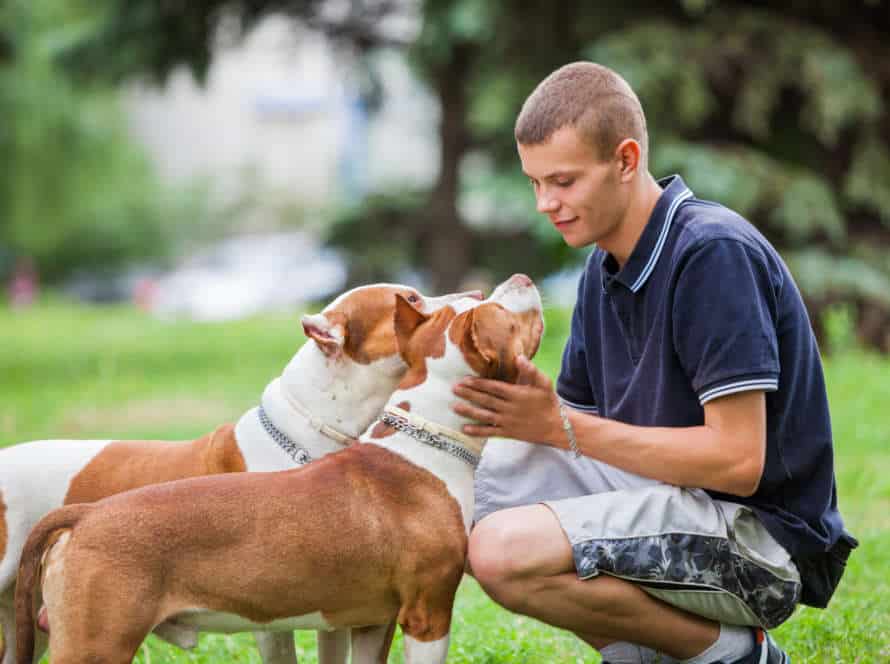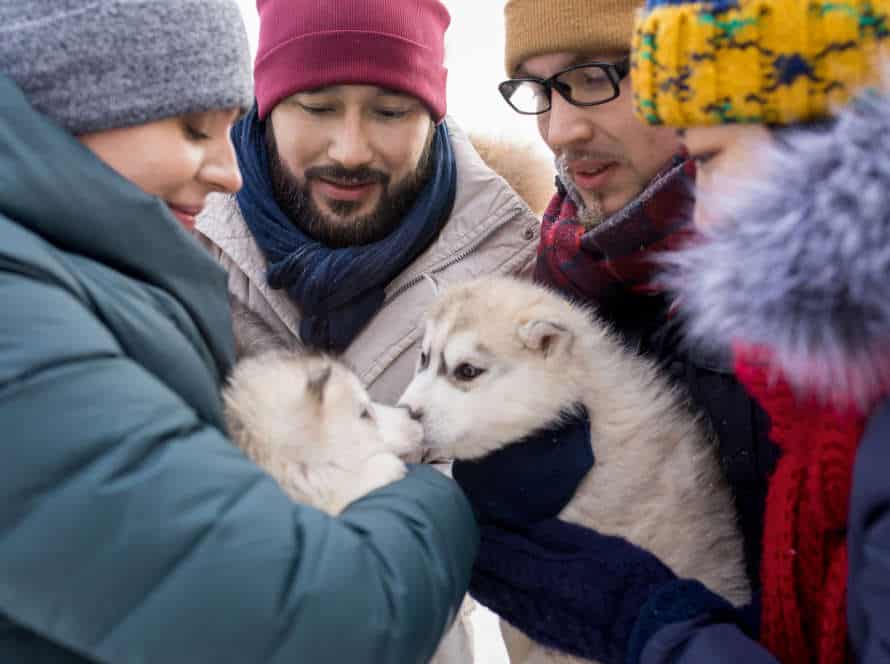Dealing with Dog-Dog Aggression: A Guide for Owners
Dog-dog aggression is a common danger. It can hurt dogs and owners. Read this guide for help managing and reducing it.
First, it is important to know that aggression is a part of a dog’s personality. Certain types of dogs are more aggressive than others. See if the aggression is caused by something specific.
Second, use behavioral modification techniques. Counter-conditioning, desensitization, and positive reinforcement can help.
Third, socialize your dog. Let them explore sights, smells, sounds, textures, and people.
Finally, speak with a dog-behavior specialist. They can help if your dog has bitten before.
Managing dog-dog aggression takes effort and patience. With the right help, your pet will be happy and healthy.
Understanding Dog-Dog Aggression
Dog-dog aggression can be tricky. It’s essential to comprehend the root causes. Reasons for aggression between dogs might be fear, dominance, territory, illness, and even frustration. Knowing the reasons for aggression can help owners better control this behavior and strengthen their bond with their furry friends.
Types of Aggression
Aggression is a common behavior in dogs. It can be towards other dogs or humans. To deal with dog-dog aggression, it’s essential to understand the six types.
- Fear aggression happens when a dog is scared.
- Territorial aggression is when a dog feels others are threatening its territory.
- Protective aggression is when a dog defends itself, food, or pups.
- Possession aggression is when a pup guards its possessions.
- Social aggression is when a dog wants to be the boss of other dogs.
- Predatory aggression is when a dog hunts, sometimes towards small pets.
Knowing the type helps owners correct the behavior.
Causes of Dog-Dog Aggression
Dog-dog aggression is an issue dog owners must understand. Several causes can be identified. Fear is one. Dogs may become aggressive when nervous or anxious, perceiving something as a threat. Territoriality may be the cause too. Unneutered males may fight for dominance if they feel their territory is invaded. Poor socialization or negative past experiences with other dogs can also lead to aggression. Resource guarding is a sign of insecurity about status. Medical conditions like pain or hormonal imbalances could be the cause. Dog owners should desensitize and recondition their dogs. Or look for professional help from a certified dog trainer or vet.
Body Language: Signs of Aggression
Comprehending a dog’s body language is essential for seeing signs of aggression. These are some common indicators:
- Tail and body posture are stiff
- Fur on back and neck is raised
- Snarling, baring teeth and growling
- Prolonged eye contact
- Loud barking, lunging
If there’s dog-dog aggression, keep yourself and other dogs away from the aggressor. Don’t punish or get physical – this could worsen the problem. Try distracting the dogs with a toy or treat, or use a calming spray to reduce stress. Seek aid from an expert trainer or vet for a secure and efficient solution for aggression between dogs.
Tip: Be careful when approaching unfamiliar dogs and never pet or interact without the owner’s permission.
Prevention and Management of Dog-Dog Aggression
Dog-dog aggression can be concerning and even hazardous! To stop this, prevention is key. Spotting the warning signs of aggression is crucial to preventing dangerous encounters. Knowing how to handle the situation when it arises is even more critical. In this guide, we will explain how to stop and manage dog-dog aggression.
Socialization
Socialization is a must for controlling dog-dog aggression. Early and consistent socialization can help your pup understand how to properly interact with other dogs, to prevent aggressive responses. Here are some tips for socializing:
- Start young – socializing should start when pup is a pup for maximum efficiency.
- Expose your dog to different people, animals, and situations to help them become accustomed to unfamiliar experiences.
- Utilize positive reinforcement techniques like treats and toys to reward your pup for nice behavior.
- Directly oversee your pup during doggie playtime to check and amend any bad behavior.
- If you’re having trouble dealing with your pup’s aggressive reactions towards other dogs, get professional assistance.
Pro tip: Bear in mind that each dog is distinctive, and some may need more thorough socialization. Have patience and remain consistent in your socializing attempts for the best results.
Training and Behavioral Therapy
Training and behavioral therapy are important for preventing and handling dog-dog aggression. Aggression can occur due to fear, lack of socialization, health issues, or territorial behavior.
Training includes socializing from a young age, rewarding good behavior, building confidence, and a safe environment.
Behavioral therapy for dog-dog aggression uses desensitization, counter-conditioning, positive reinforcement, and tracking triggers.
These techniques help manage aggression by teaching commands, redirecting focus, controlling distance, and controlled interactions with other dogs.
With dedication and help from professionals, dog-dog aggression can be prevented and managed. This allows your furry friend to have a happy and healthy life.
Managing Dog-Dog Interactions
Managing dog-dog interactions can be tricky when your pup displays aggressive behavior towards other pooches. Responsible pet ownership includes preventing and managing dog-dog aggression. Here are some tips:
- Know and understand what triggers your dog’s aggressive behavior, like food or toys.
- Socialize your pup early to prevent fear and anxiety around other dogs.
- Utilize positive reinforcement to show your dog how to behave around other dogs.
- Dodge situations that may cause your dog’s aggression, like overcrowded dog parks.
- When needed, leash and muzzle your dog to protect other dogs.
- If your dog has severe or frequent aggressive behavior, get professional help from a dog behaviorist or trainer.
It is your duty as a dog owner to make sure you and others are safe. With the correct training and management techniques, you can create a wonderful and safe environment for your pup to socialize with other dogs.
Safety Measures for Dealing with Dog-Dog Aggression
Safety first! When it comes to dog-dog aggression, it is essential to take steps to prevent conflict. Have a plan ready, make sure all dogs have been socialized and trained, and monitor their interactions. In this guide, we’ll look at different ways to keep your dogs safe. Implementing these safety methods can help you deal with dog-dog aggression.
Identifying Trigger Points
Trigger points are activities or situations that can cause a dog to be aggressive to another dog. Understanding these points is essential for avoiding dog-dog aggression and protecting both dogs and owners.
Here are some common trigger points to look out for:
- Resource guarding: If a dog feels that their items, like toys or food, are threatened by another dog, they can be aggressive.
- Fear or anxiety: When a dog is scared or anxious around other dogs, they may become aggressive if they sense danger or are in a tight spot.
- Territory: Dogs can act aggressively when they feel their territory is being violated, like in their home or their owner’s space.
- Poor socialization: Dogs who haven’t been exposed to other dogs much might become aggressive due to fear or no social skills.
By spotting these trigger points and applying the right safety steps, like proper introductions and monitoring, owners can avoid dog-dog aggression and have a pleasant relationship between their pets.
Safety Tools and Equipment
When managing dog-dog aggression, security is crucial. Use the right tools and equipment to stay safe. Here are a few:
- Muzzle: Put one around a dog’s nose and mouth to stop biting. Use for introducing two dogs or when handling aggressive ones.
- Harness and leash: Securely control and separate dogs. This helps handlers react quickly and avoid fights.
- Spray bottle of water: Distract dogs with cold water during aggressive encounters.
- High-value treats: Reward dogs with treats for good behavior during training. Use as positive reinforcement.
Safety first! Seek help from a professional animal behaviorist.
Avoiding Aggressive Encounters
Carousing between canines can be damaging to both pets and people. It is essential to take the necessary safeguards when managing canine-canine aggression. Here are a few pointers to dodge aggressive confrontations:
- Keep your poop on a lead in public areas, particularly when there are other dogs around.
- Refrain from permitting your pup to approach unfamiliar dogs, particularly if the other dog demonstrates aggressive behavior.
- Grasp reading your pooch’s body language and behavior to foresee and avert any aggression.
- Teach your pup to obey your orders and apply them in circumstances where your pup shows signs of aggression.
- Consider seeking expert help from a dog behaviorist or trainer if your pup shows frequent or severe aggression towards other dogs.
By adhering to these measures and being alert, you can lessen the danger of aggressive encounters between dogs and ensure the wellbeing of everyone involved.
Working with Professional Trainers and Behaviorists
Dealing with dog-dog aggression? Get help from a pro! A trainer or behaviorist can get the background of the pup, identify triggers, and get other relevant info about the aggression. This info helps create a plan for reducing or correcting the aggressive behavior. It’s a valuable asset!
Finding the Right Professional
When it comes to your pup’s aggression, finding the right pro trainer or behaviorist is essential. Here are several suggestions to guide you in selecting the best:
- Check their credentials and experience – Ensure they have certifications from reliable organizations and years of experience.
- Read online reviews and get references – Research reviews on the net and ask for references from the pro.
- One-on-one meetings – Opt for a pro who does one-on-one sessions, so they can give your pup the attention they deserve.
- Positive reinforcement – Look for a pro who uses positive reinforcement, not punishment or negative reinforcement.
Tackling dog-dog aggression is challenging, but having the right pro makes all the difference.
Pro tip: Stay consistent with your pup’s training, and trust your gut when picking a pro.
What to Expect in a Training Session
At a training session with an expert dog trainer or behaviorist, you’ll get a strategy tailored to your pet’s aggression towards other dogs. The session starts with assessing your pup’s behavior and triggers that cause aggressive behavior. Working together, a unique plan is created with desensitization exercises, behavior-modifying techniques, and positive reinforcement training. You have to take part and apply the techniques to reward good behavior. The trainer will also offer ongoing help and resources. It’s important to remember that resolving dog-dog aggression takes time, consistency, and commitment. Pro Tip: To get the best results, always use a certified pro specializing in dog behavior and training.
Follow-Up and Maintenance
Dealing with dog-dog aggression requires proper follow-up and maintenance. Get expert help, but keep on working with your pup to stop aggressive behavior from returning. Here are some tips:
- Be consistent! Set rules and boundaries to have a clear hierarchy at home.
- Reinforce good behavior and discourage bad by using reward-based training and redirection.
- Make sure your pup exercises enough to reduce stress and be calm around other dogs.
- Keep socializing them in controlled environments to build positive associations and reduce fear or anxiety.
- Monitor their actions and address any sign of aggression quickly with a pro’s help.
Remember: Dog-dog aggression takes patience, dedication, and ongoing care. With the right follow-up and maintenance, you can help your dog overcome their aggression and live a happy life.
Legal and Ethical Considerations for Dog Owners
Dog-dog aggression is a major concern! It can be dangerous for both the pooches and their people. So, dog owners should be aware of legal and ethical considerations when dealing with this issue. Here’s a guide to legal and ethical matters to consider before tackling dog aggression.
Liability for Dog-Dog Aggression Incidents
Legal and ethical liabilities can result from dog-dog aggression incidents. It is essential to be aware of your responsibilities. For example, as a dog owner, any harm caused by your pup is your responsibility. This includes medical expenses, property damages, or any other costs due to the aggression.
Ethically, the safety of all dogs involved must be prioritized. To prevent future aggression, it is important to provide proper training and socialization. If an incident does occur, take responsibility for your dog’s behavior. Make sure it does not happen again.
Above all, being a responsible dog owner involves looking after your pooch and respecting the safety and wellbeing of other canines and owners.
Responsibilities of Dog Owners
Being a responsible dog owner involves legal and ethical requirements and taking care of your pup’s health and safety. One key part is managing your dog’s aggression towards other dogs. Here are some tips:
- Get help from a certified dog trainer or behaviorist who specializes in this.
- Manage your dog’s environment to avoid aggression triggers.
- Train your pup using positive reinforcement.
- Observe your dog’s body language and signs of stress.
- Keep your pup on a leash and in control in public.
- Prioritize safety for both your pup and others, taking necessary precautions.
Advocacy and Support for Dogs and Dog Owners.
Dealing with dog-dog aggression is challenging. It requires legal and ethical considerations. Here are tips to guide dog owners:
- Health check your dog. Aggression can come from pain or stress.
- Controlled introduction. Do it at a dog park with a professional dog trainer.
- Training and behavior modification. Teach basic commands, like “sit” and “come”. Positive reinforcement helps.
- Leash and muzzle in public. Especially when your dog might react aggressively.
Remember: Follow legal and ethical considerations for safety. Pro Tip: Seek professional advice and training.
Frequently Asked Questions
Q: What is dog-dog aggression?
A: Dog-dog aggression is a behavioral problem where a dog displays hostile behavior towards other dogs. It can manifest in various forms such as growling, barking, lunging, or attacking.
Q: What causes dog-dog aggression?
A: Dog-dog aggression can have various causes, including fear, anxiety, territorial behavior, lack of socialization, genetic predisposition, past traumatic experiences, or illness.
Q: How can I prevent dog-dog aggression?
A: Preventing dog-dog aggression involves early socialization, training, positive reinforcement, and providing your dog with ample exercise and mental stimulation. It’s also essential to monitor your dog’s behavior around other dogs and seek professional help if you notice any signs of aggression.
Q: What should I do if my dog displays aggression towards another dog?
A: If your dog displays aggression towards another dog, it’s important to separate them immediately to prevent any injuries. You should also seek professional help from a certified dog behaviorist or trainer who can help you understand why your dog is acting aggressively and provide guidance on appropriate training techniques.
Q: Can dog-dog aggression be treated?
A: Yes, dog-dog aggression can be treated, but it depends on the underlying cause and the severity of the problem. It often requires a combination of behavior modification techniques, positive reinforcement, and medication to address anxiety or fear-related issues.
Q: Is there a way to safely introduce my dog to another dog?
A: Yes, introducing dogs to each other should be done gradually and in a controlled environment. Start by keeping the dogs on opposite sides of the room or with a physical barrier between them, such as a baby gate. Then, gradually introduce them by allowing them to sniff each other while on a leash. If they show any signs of aggression or discomfort, separate them immediately and seek professional help.

